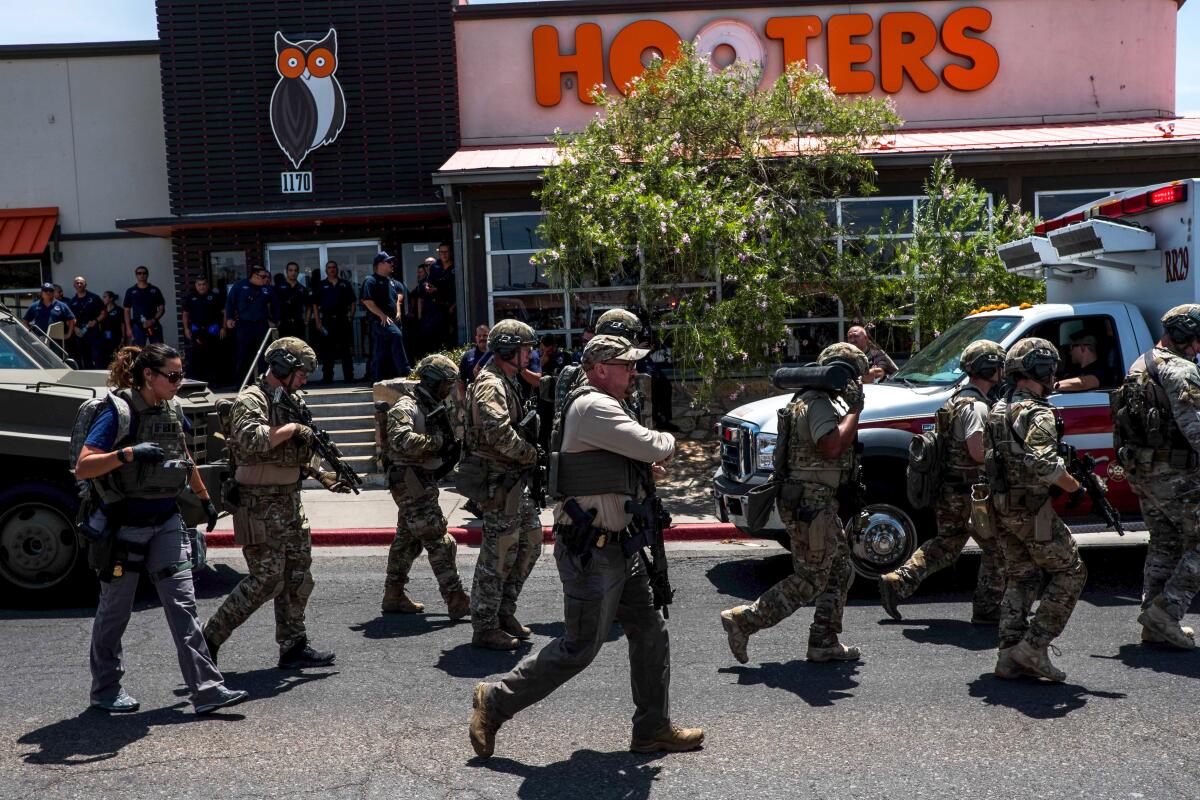Editorial: Questions remain about the El Paso massacre, but experience tells us many of the answers

- Share via
As usual, facts and truth are elusive in the hours after a mass shooting. Early reports on the murderous rampage at an El Paso shopping mall put the death toll at at least 20, with more people hospitalized with grave injuries. Chillingly, but not surprisingly, police were investigating whether anti-immigrant statements posted online were written by the alleged gunman, and whether such details provide a path to understanding this latest mass atrocity.
We must first pause at the weapon. Some sort of rifle, witnesses say. It wouldn’t be a sucker’s bet to wager that it was a semiautomatic combat-style firearm, which seems to be the weapon style of choice. This is umpteenth example of why such firearms do not belong in the hands of civilians. They are designed to kill as many people as possible in a short period of time, and once again that truism has proved itself out in the bloody slaughter of people doing their Saturday shopping. Is there any outrage left in the depleted well to draw on here? Or do we just wait for the gun enthusiasts to shake their heads, offer thoughts and prayers, and mumble some platitudes about access to mental health as the political system continues its stasis on the vital issue of gun violence and the threat to the lives of everyday Americans — every day?
But moving on. All too often these attacks are perpetrated by assailants who are either directly motivated by racial hatred or informed by it. The gunman who killed three people in Gilroy just last week had urged people to read a 19th century novel that is a cult favorite among white supremacists. Last year, an armed man in Kentucky who failed to gain access to a black church walked into a supermarket and shot two black customers dead, while sparing a white one because, he allegedly said, “whites don’t shoot whites.” Dylann Roof murdered nine people in a South Carolina church four years ago to foment a race war, and let one black worshiper live so she could tell the story.
And on it goes.
The shooter may or may not turn out to have been “mentally ill.” But unquestionably, racism, an ideology of white supremacy, and our gun culture are central to what’s happening around the country. We’re living in a society that teaches schoolchildren what to do when the “active shooter” comes, and that has incorporated that inane bit of police jargon into everyday life. Can we get some inactive shooters for a change?
Apparently not. So, once again, people engaged in the everyday aspects of American life — this time, shopping; last week, attending a garlic festival — are murdered where they stand in acts at once random and predictable. According to the Gun Violence Archive, there have been 250 mass shootings — defined as at least four gunshot victims in a single incident — since Jan. 1. Today, we note, is the 215th day of the year. So more than one mass shooting incident each day this year, a pace somewhat ahead of recent years.
Yet this passes for normal. Because as a nation, we accept it.
More to Read
A cure for the common opinion
Get thought-provoking perspectives with our weekly newsletter.
You may occasionally receive promotional content from the Los Angeles Times.










